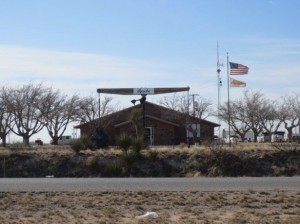Crude oil inventory in the U.S. has surged dramatically in the last two years, but has been constrained by bottlenecks in U.S. pipeline networks. Two major pipeline reversal projects mirror the reversal of fortune in U.S. energy production. 
Longhorn Pipeline
Magellan Midstream Partners has begun shipping crude oil in its reversed Longhorn Pipeline. Spokesman Bruce Heine said that the pipeline linefill from Crane, Texas to east Houston was completed so commercial operations could begin.
Crane, Texas is in the Midland area where Permian Basin oil production has been surging. The oil that had been flowing into the glutted U.S. crude futures hub at Cushing, Oklahoma will now be sent to Houston. This conversion will alleviate distortions in global oil markets stemming from depressed U.S. crude prices at landlocked Cushing.
The Crane-to-Houston segment of the line, which had carried refined products to El Paso from Houston, was converted and reversed to move crude. Magellan’s Houston distribution system is connected to refineries along the Houston Ship Channel and Texas City. In the first 45 days, the line will move 75,000 barrels per day, and ramp up to its full capacity of 225,000 BPD in the third quarter of 2013.
Seaway Pipeline
The Seaway Pipeline is a 50/50 joint venture between Enterprise Products Partners L.P. and Enbridge Inc. It is part of the Seaway system which includes a 500-mile, 30-inch diameter pipeline between Cushing, Oklahoma and the Freeport, Texas area. Also, a terminal and distribution crude oil network originating in Texas City that serves all of the refineries in the Greater Houston area.
The project to reverse the flow direction of the Seaway Pipeline was completed in May, 2012 and has a capacity of 150,000 BPD. Following pump station additions and modifications, the capacity of the Seaway Pipeline will increase to 400,000 BPD of crude oil.
Enterprise and Enbridge announced construction of a loop (twin) of the Seaway Pipeline. It will parallel the existing right-of-way from Cushing to the Gulf Coast, is expected to more than double Seaways’s capacity to 850,000 BPD by the first quarter of 2014.
Crude Oil Inventory Relief
Improvements in southbound capacity to the Gulf Coast from the oversupplied Cushing hub will unleash the U.S. crude oil inventory, reduce the need for imported supplies, and promote domestic energy security.



